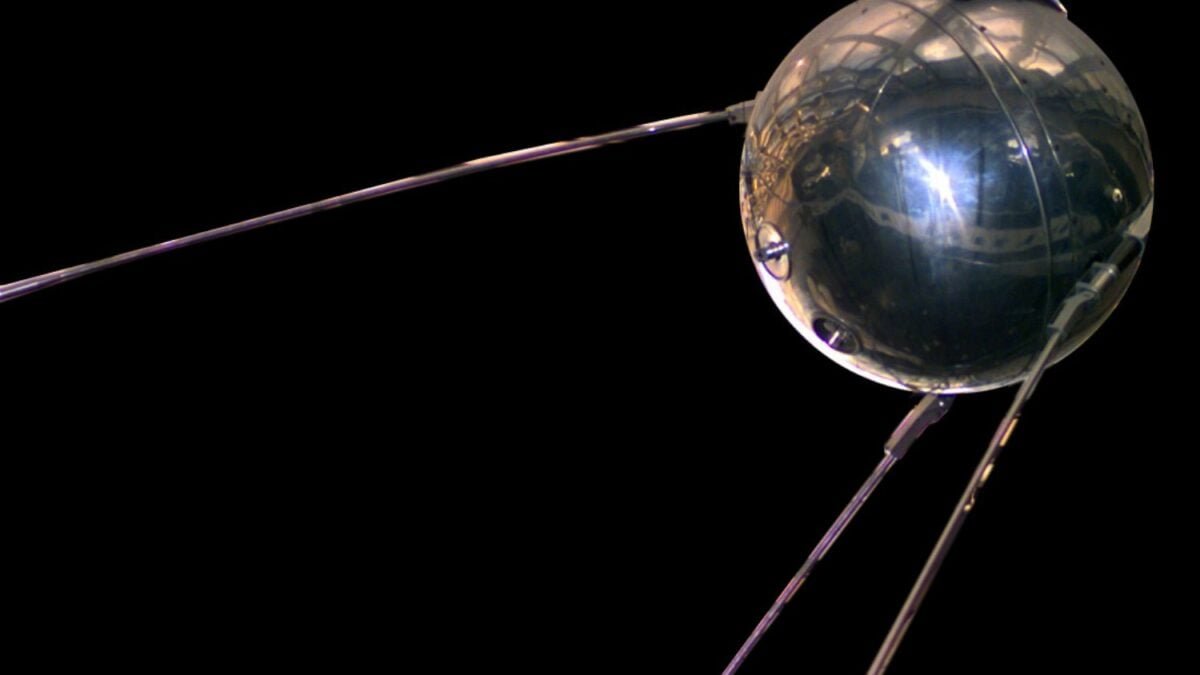The “beep-beep” that changed the world: 68 years after Sputnik and the birth of the Space Age

On the night of October 4, 1957, from a secret site in Kazakhstan, a R-7 Semiorka rocket took off carrying a spherical object measuring just 58 centimeters in diameter and weighing 83 kilograms. This was the PS-1, short for Prosteishi Sputnik, the “simplest satellite”. What followed marked a turning point: for the first time, humanity placed a satellite into orbit.
The curious thing is that this launch was not exactly as we know it today. The term “Sputnik” became popular later on, and the original Soviet plan was for Object D, a much larger and more complex satellite, to be the first to reach orbit. However, Sergei Korolev, the chief designer of the Soviet space program, didn’t want to take any risks: the important thing was to beat the United States to it, even if it meant using a more basic design.
### A simpler satellite than planned
The Sputnik 1 consisted of two pressurized aluminum hemispheres containing three heavy silver-zinc batteries and a radio system that would transmit for 21 days. Its signals, a repetitive “beep-beep-beep” on two frequencies, could be received up to 12,000 kilometers away.
Far from being just a “metal ball”, the satellite had a scientific mission: to measure internal temperatures and demonstrate the feasibility of transmission in orbit. Those signals, repeated until the batteries were drained, confirmed that the USSR had achieved the unthinkable.
In parallel, millions of people believed they were seeing the Sputnik crossing the night sky. The reality was that what was visible to the naked eye was the huge Blok A stage of the R-7 rocket, 18 meters long and 7.5 tons, which orbited for almost two months. The small Sputnik, on the other hand, was too faint to be seen without instruments.
### A race against the clock against the United States
The decision to launch a simplified satellite was as political as it was scientific. The United States had announced the Vanguard Project, which aimed to orbit a satellite during the International Geophysical Year of 1957. Korolev knew he had to get ahead.
The 8K71PS, a modified version of the R-7, had already failed in two previous attempts. The Sputnik was only the third successful launch of the R-7 and yet it managed to reach orbit, albeit slightly lower than planned. It remained in space for 92 days, completing over 1,400 orbits around Earth before disintegrating in the atmosphere.
That small satellite became the greatest propaganda victory of the Cold War: the USSR, devastated by World War II, had surpassed the world’s largest technological power in an entirely new field.
### The legacy of the “Sputnik moment”
The impact was immediate. In the United States, the news was a national shock and it marked the beginning of the space race. The American Explorer 1 would follow months later, in January 1958, but nothing would be the same. The “beep-beep” of Sputnik not only confirmed that orbit was achievable, but also showed the world that science could progress at the speed of politics.
The name “Sputnik”, which means “traveling companion” in Russian, became forever associated with the beginning of the Space Age. Since then, every satellite, probe, or space station is an heir to that small metallic sphere that ushered in a new era for humanity.
68 years later, it remains one of the best examples of how technology, ambition, and historical urgency can converge in a single object to change the course of history.
[Source: ]






